3 Core Business Loan Components
Most business owners looking for financing don’t have time to research and learn everything they may need to know about the process. The reality is that most small business owners are quite busy running and managing their business. Getting help on the essentials is a good idea, however, especially if this is your first foray into the business loan process.
Preparation is the key to successfully navigating the maze of business loan applications. According to the U.S. Small Business Administration (SBA) you should be prepared to answer typical questions your lender will ask:
- Why are you applying for this loan?
- How will the loan proceeds be used?
- What assets need to be purchased, and who are your suppliers?
- What other business debt do you have, and who are your creditors?
- Who are the members of your management team?
So what are the core components of a business loan? Here is a brief overview to help you understand the essential terms that describe these core components.
The Essential Elements of a Business Loan
1. Principal
The loan principal is the actual amount of money you have borrowed and hasn’t been paid yet. A simple example might be illustrated this way:
If you borrow $10,000 to purchase a car, that amount is your initial principal. After you have made your first payment of $500 on the principal amount, the remaining principal would then be $9,500. Keep in mind that the principal is only the amount loaned to you and does not include the interest charged on the principal.
Your loan principal determines how much interest and fees will be calculated on your business loan. Interest and fees are usually shown as a percentage of the principal and are the next two components we’ll look at.
2. Interest
Interest can be best understood as the amount of money a borrower pays the lender in exchange for the privilege of using their money. Interest is typically given as a percentage amount, for example: 10 percent. There are two types of loan interest to consider:
Simple interest, which is determined by multiplying the interest rate (10% in our example) by the principal over the number of periods of the life of the business loan. In other words, a $1000 loan that is to be paid back in one monthly payment would incur a simple interest charge of $100.
Compound interest, which requires paying interest on top of the interest already owed. A simple illustration would be if you borrowed $100 on Monday with 10% interest, compounding daily. If you repay the loan in full on Tuesday, you’ll owe $110. However, if you repay the loan on Wednesday, you will owe $121, that is: $110 + ($110 x 10%).
Keep in mind, too, that the larger the number of compounding periods, for example monthly versus annually, the higher the compound interest amount will be.
3. Fees
Fees on business loans can be charged in two different ways.
Fees charged upfront or at “origination” are simple, one-time fees that your lender will charge to cover the cost of evaluating and originating your loan. Be sure to ask about and be very clear what upfront fees you will be expected to pay. All lenders are not created equal and some lenders add additional fees.
Ongoing fees are incurred during the life of your loan or when you pay it back. Many lenders also charge a prepayment penalty fee to discourage borrowers from paying off their loan early. A prepayment penalty allows the lender to earn more money on interest by encouraging you to pay off the loan over the full loan period.
Being Prepared Is a Must
Now that you have a good understanding of the components of a business loan, you can move forward with finding a good lender. And once you are ready to look at loan offers, there is one more component that brings together all the others for any loan you’re considering. It is the Annual Percentage Rate (APR), and a good lender will help you calculate it and explain its significance.


